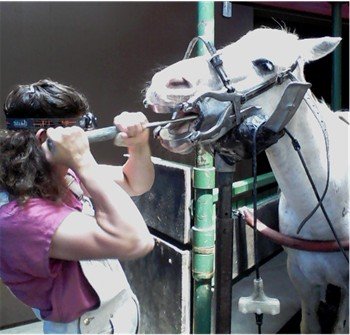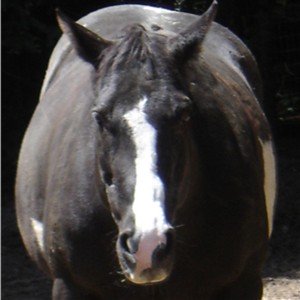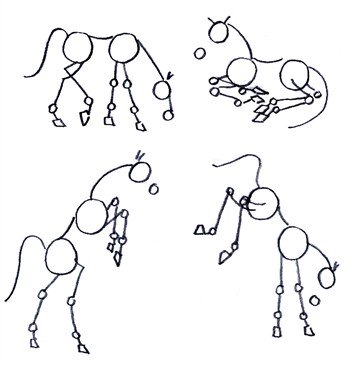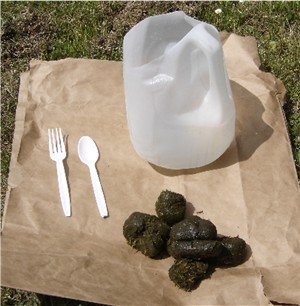Horse Sheath Care and Cleaning
Take the Mystery Out of Sheath Cleaning
Horse sheath cleaning is something every gelding and stallion owner will have to deal with sooner or later. Just like dental care, sheath care is an important part of keeping the male horse healthy and free of infection.
Most horse owners are familiar with the thick waxy buildup that accumulates between the teats in mares. Male horses get the same thick waxy buildup inside the sheath. It is called smegma. If left to accumulate it is not only unsanitary, but is also a health hazard to your horse.
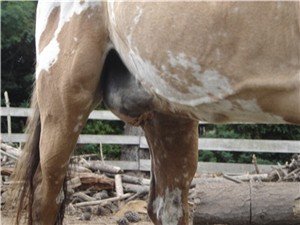 A gelding with sheath fever
A gelding with sheath feverSheath Fever
A dirty sheath can get infected. An infected sheath can prevent the horse from either dropping his penis down to urinate or retracting it back up. A urinary tract infection is likely. If left untreated the infection can spread to the kidneys. This is a very painful miserable condition for a horse to be in. Severe cases can be life threatening and must be treated with antibiotics.
The average gelding will need his sheath cleaned at least once a year.
The Ins and Outs of a Horse Sheath
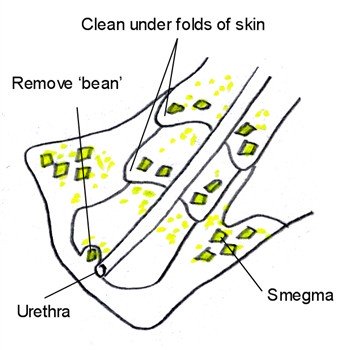 Inside a Horse Sheath
Inside a Horse SheathIt is a lot easer to clean a sheath if you know the anatomy of a retracted penis. The penis had two major loose folds of skin that telescope over the retracted penis. Smegma will accumulate under these skin folds and around the walls of the sheath.
The next area that must be checked is a small ‘pouch’ on the tip of the penis just north of the urethra. This opening is just big enough to fit the tip of your finger. Smegma often builds up here and hardens to form a ‘bean’. The bean can grow and press down on the opening of the urethra causing irritation and pain.
Horses Sheath Cleaning
You will need a sheath cleaner like ‘Excalibur’ to do the job. Do not use soap! Soap is very irritating. A prepared sheath cleaner is designed to cut through the waxy buildup and still be gentle to sensitive skin.
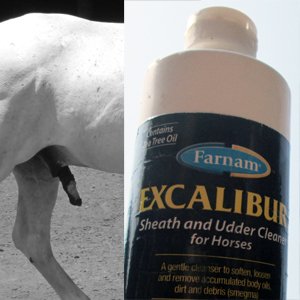 Use a Commercial Sheath Cleaner
Use a Commercial Sheath CleanerTo clean your horse’s sheath start by finding a familiar quiet place to do the job. A horse that is comfortable and calm is more likely to drop his penis. If he does, your job will be much easier.
Start by massaging a liberal amount of sheath cleaner into all the nooks and crannies of the retracted penis and the walls of the sheath. Don't be surprised if your gelding pulls his penis way up high at first.
Be patient and continue to work the cleaner around. As you work, you will feel the debris breaking up. Be sure and remove the ‘bean’ if you find one. Try to avoid the opening to the urethra.
Be gentle. The horse sheath is a sensitive area.
You will find that you are able to remove some of the larger chunks of smegma by hand. Other bits will stubbornly stick to the tissue. Allow the cleaner to soak for several minutes and then apply a second coat and let that soak.
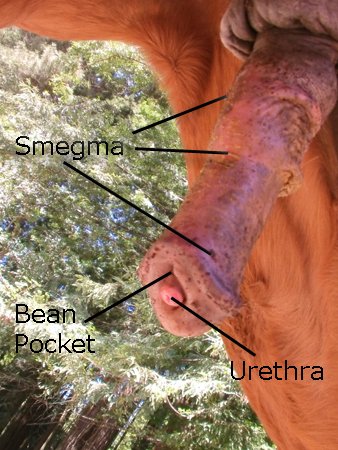
Once you feel you have loosened all the crud you can get, it is time to rinse the sheath out. Use warm water if at all possible. If you must use regular hose water, be sure the pressure is turned down low so as not to cause any pain.
Rinse thoroughly to remove all the sheath cleaner and loosened smegma. The commercial sheath cleaner is designed not to be irritating if it is not completely flushed away, yet you will want to rinse it out as best you can.
Unless you have a breeding stallion needing regular cleanings, the average male horse will do well with a sheath cleaning every 6-12 months. Geldings tend to need it done more often as they age.
Signs a Horse Sheath Needs Cleaning
- It’s been over a year since the last cleaning
- The horse shows signs of irritation
- Unable to drop or retract penis
- Lots of Waxy buildup visible on the penis
- Tail rubbing on fences can indicate smegma buildup
If trained properly and handled gently, many geldings will tolerate having their sheath cleaned. Some horses simply will not. A veterinarian will have to clean the sheath of an uncooperative horse with the aid of a tranquilizer. Either way, the job gets done.
Want more at-a-glance detail right where you need it? Check out this fantastic stallion anatomy chart.
More Equine Topics You May Enjoy
How to Draw a Horse
Six easy step by step horse drawing lessons. Learn to draw horse heads and horse hooves too.
Horse Hoof Anatomy
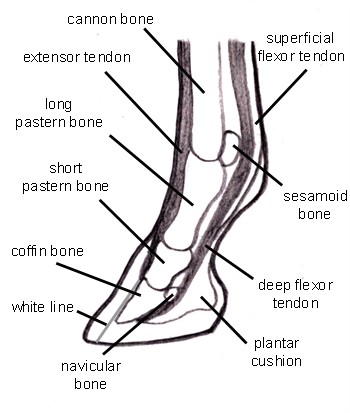
See horse hoof anatomy inside and out for a better understanding of your horse's feet.
Easy Sand Test
Easy Sand Test - An easy sand test at home is a simple way to find out if your horse has sand in their gut. If your horse tests positive, you can do something about it.
Return to top of Horse Sheath page to easily access the navigation bar on the left for more at Equine Spot.

